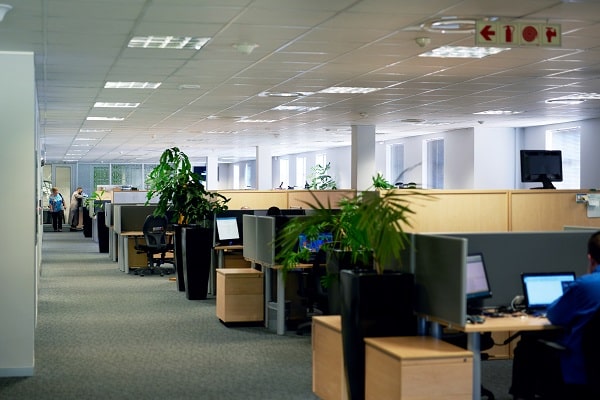When it comes to workplace hazards, one might think employees who work on dangerous construction jobsites or in manufacturing plants are the only workers at risk for injuries. However, while an office setting might be quieter and cleaner than those types of environments, there are still certain risks these employees face on a daily basis. Injuries caused by machinery, slips and falls or fire hazards can all occur in an office setting, and the cost of these injuries can be as high as those of jobsite or plant workers.
Office Safety Hazards – Tips to Reduce Worker Injuries

June is
National Safety Month, created by the National Safety Council as a means of raising awareness of the leading safety and health risks facing employees to help reduce the number of workplace injuries and deaths in the United States. Let’s take a closer look at some of the common safety hazards found in most offices, as well as how to eliminate or minimize them.
Office Safety Hazard #1: Machines
Standard office equipment like copiers, shredders, fax machines and printers can all pose risks to workers. Make sure employees are properly trained on how to use the machines, or only allow those who are qualified to use them. Post reminders to keep body, hair, clothing and jewelry away from moving or hot parts, and keep protective guards in place at all times. Electric machines should be plugged into grounded outlets, and any defective or damaged parts such as power cords and electrical plugs should be replaced immediately by a qualified service professional. Keep combustibles away from hot parts of machines.
Office Safety Hazard #2: Slips, Trips and Falls
Often in an office setting, issues like infrequent housekeeping, power cords in walkways and high traffic areas, or even simply cramped conditions can result in
falls. Make sure power cords are tucked away or covered with thresholds anchored to the floor and replace extension cords with permanent outlets. Keep aisles clear of furniture, equipment and boxes so workers have plenty of room to navigate. Help keep floors from getting slippery by cleaning up spills immediately, use nonslip floor wax and place mats in doorways during inclement weather conditions.
Office Safety Hazard #3: Ergonomic and Digital Eyestrain Hazards
It’s common for office workers to sit in one position at their desks for several hours, typing away on a keyboard or answering phones. This can lead to back, neck and/or wrist pain that can easily become chronic. Provide chairs that can be adjusted for each employee’s individual height and comfort, and assist in
arranging the workstation to minimize physical stress, cumulative micro-trauma and repetitive stress injuries. Employers should also recommend workers take breaks to stretch and look away from their computer screen, as the Vision Council recommends the
20-20-20 break: every twenty minutes, take a twenty-second break and look at something twenty feet away. Frequent phone users should utilize headsets, and repetitive tasks should be assigned to various workers to prevent them from making the same movements throughout their entire shift. Additionally, ensure all workers are well-versed in
safe lifting practices to prevent costly back injuries.
Office Safety Hazard #4: Traveling from Office to Plant/Jobsite
Some office workers are required to go back and forth between the office and a jobsite or onsite plant, where they could face noise, chemical splash or flying debris. Employees should be provided and required to use safety equipment like proper footwear, goggles, earplugs or hardhats in these dangerous areas. Also, warn office workers not to touch employees in the midst of a job using a tool or machine, as they could lose control and cause injury to themselves and the office worker.
Office Safety Hazard #5: Fire Hazards
Certain materials in offices can lead to a fire, especially solvents, inks and other chemicals. Teach workers to keep these types of materials away from sources of heat or sparks. Smoking should be prohibited, or only allowed in designated areas outdoors with adequate ashtrays and protection from the elements and adverse weather. Other common office fire hazards are portable space heaters, power cords that are too small or overloaded electrical circuits. All workers should be properly trained, using simulated drills, in what to do in the event of a fire or other emergency.

Help Create a Safe Office Environment with Loss Control Services from AmTrust Financial
AmTrust’s
Loss Control Department can help small businesses assess the conditions, practices and processes of the workplace to help identify hazards, recommending strategies to help reduce, control or eliminate accidents and losses. We are dedicated to providing the right
resources to create the most effective loss control program for the specific needs of our insureds. For more information, please
contact us today.
This material is for informational purposes only and is not legal or business advice. Neither AmTrust Financial Services, Inc. nor any of its subsidiaries or affiliates represents or warrants that the information contained herein is appropriate or suitable for any specific business or legal purpose. Readers seeking resolution of specific questions should consult their business and/or legal advisors. Coverages may vary by location. Contact your local RSM for more information.